
PREV ARTICLE
NEXT ARTICLE
FULL ISSUE
PREV FULL ISSUE
MORE ON POGSLev Messick writes: "I'll bite! What are POGS?" Last week's article by Bill Myers about Lloyd Jorgenson's new book on the AAFES (Army and Air Force Exchange Systems) gift certificates called POGs didn't address where the name "POG" itself came from. Bill kindly forwarded another article of his addressing the topic. Thanks! Read closely and you'll learn the unusual origin of the name. -Editor The events of 11 September 2001 led to increased U.S. military operations and thus military deployments. Military Payment Certificates (MPC) were not issued for these operations but there is a collectable numismatic issue available from this period. Army Air Force Exchange Service (AAFES) provides multiple services to the military deployed in support of Operation Enduring Freedom and Operation Iraqi Freedom initially and then Operation New Dawn, Operation Enduring Freedom, Operation Inherent Resolve, and others as the conflict evolved. Post Exchanges (PX), barber shops, beauty shops, gift shops, movie theaters and food courts are among some of the facilities available. There is a significant cost in transporting goods from the United States to Kuwait, Iraq and Afghanistan and other overseas theaters. AAFES wanted to make maximal use of the available shipping weight for goods for the soldiers, and not use up part of that weight to ship coins for use in its facilities. They therefore instituted the use of lighter weight plastic discs (polystyrene, 1.5816 in (40 mm) in diameter) in the values of 5 cents, 10 cents and 25 cents as a substitute for change. They are "Gift Certificates", as only the U.S. government can manufacture money, and are known as POGs. No 1 cent POGs were issued so prices were rounded off to the nearest 5 cents. They are printed on 29 by 40 inch sheets with 24 horizontal rows and 15 vertical rows. They are punched out of the sheet and shipped in trays with 500 POGs in a tray for the 5 and 10 cents and 400 POGs in a tray of 25 cents. They are shipped in boxes that contain 10 trays.
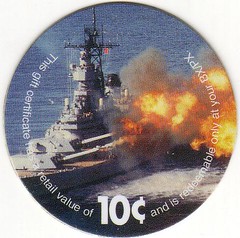
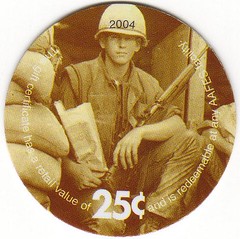
"POGs" originally were a children's toy which is modeled after the milk bottle caps that children collected and used to play a game in the 1920s to the 1950s. The Haleakala Dairy in Maui produced juice with paper caps on the bottles. One of these juices was a mixture of passion fruit, orange and guava. The first letter of each juice is the source of the name POG. POGs were then manufactured as toys. Since the equipment and material to manufacture POGs already existed the decision was made by AAFES to use POGs for change.
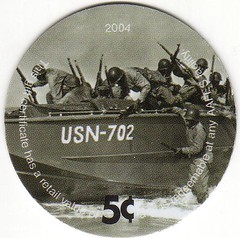
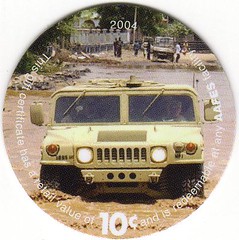
There are 16 series of AAFES POGs, but there were no 5 cents POGs issued for the 8th, 12th and 13th series as there were enough already in circulation. "Printing" and "issue" are used instead of series in describing POGs in some references, but series is used here, as that is how MPC are listed. The first POGS were a simple design and has "Gift Certificate" across the top, "AAFES" across the bottom and the denomination (5¢, 10¢, 25¢) in the center on one side of the POG. On the other side, the denomination (5¢, 10¢, 25¢) is located at the top, "AAFES" on the bottom and three lines of text in the middle which state: "This gift certificate has a retail (line 1) value of (5¢, 10¢, 25¢) cents and is redeemable (line 2) only at your BX/PX" (line 3). The background is white/grey on the 5 cents, brown on the 10 cents and red/brown on the 25 cents. For the 2nd to the 14th series the denomination side has AAFES at the top, the denomination (5¢, 10¢, 25¢) in the middle and GIFT CERTIFICATE at the bottom.
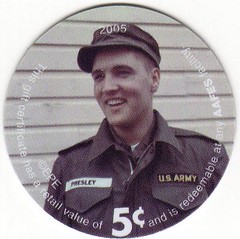
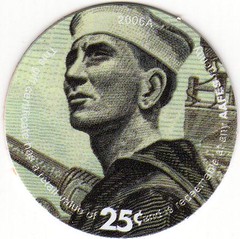
There are exceptions which include the 5th series 10 cents POG that has Bassett under 10¢ and two of the 11th series 25 cents POGs that have the Pizza Hut Express and Taco Bell Express logo in the center with "This gift certificate has a retail value of 25¢ and is redeemable at any AAFES facility." proceeding along the edge from upper left to upper right in a counterclockwise direction with 2008 at the top. For the 15th and 16th series AAFES was replaced with EXCHANGE at the top. For the 2nd to the 16th series the background color of the POGs is blue for the 5 cents POG and is a photograph of water, green-brown for the 10 cents POG which is a picture of rust on a vehicle and red for the 25 cents POG which is a photograph of fire made by battleship guns. For the 2nd to the 16th series the side opposite the denomination has a picture as the background. Curving along the edge from upper left to upper right in a counterclockwise direction is "This gift certificate has a retail value of (5¢, 10¢, 25¢) and is redeemable only at your BX/PX." Starting with the 4th series "only at your BX/PX" was replaced by "at any AAFES facility". The 15th series "AAFES facility" was replaced with "Army & Air Force Exchange facility". For the 16th series "Army & Air Force Exchange facility" was replaced by Exchange facility". There were a variety of images used but some themes were military aircraft and equipment, classic photos, the Greatest Generation (noted as GG on the POG), Elvis Presley (6th series), NASCAR, images from series 681 MPC (face of $1, $5, $10), Marvel comics, photo contest (9th & 11th series), U.S. presidents and company logos (Red Bull, Coke, Sprite, Coca Cola, AT&T). There were also POG with a metallic coating, three-dimensional image, and lenticular images (different images when tilted). It needs to be noted that the use of a company logo on POGs was to show appreciation for the company's support of military family support programs. Starting with the 5th series there were POGs with and without the overprint OPERATION IRAQI FREEDOM and OPERATION ENDURING FREEDOM. OPERATION NEW DAWN replaced OPERATION IRAQI FREEDOM for the 15th series.
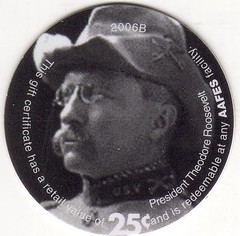
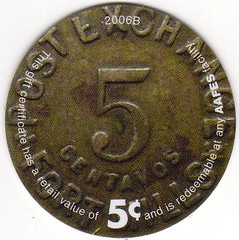
There are 3 classification systems. The system used most often was an alpha numeric system created by Doug Bell and Steve Swoish. The series is designated by a number followed by a letter for the POG (A-M with no I), then the denomination (5, 10, 25) and then 1 (for one each, later this was dropped). If it comes with and without an overprint, then it is followed by W (with) or WO (without). For example, 14D251WO is the 14th series, POG D, 25 cents without overprint. The Standard Catalog of World Paper Money Specialized Issues has them listed after MPC from M121 to M591. The POGs with and without overprints are subcategorized as (a) for POGs with the overprint and (b) for the POGs without the overprint. The Concise Catalog of U.S. Military Payment Certificates list the POGs as number 1-502. The POGs with and without overprints have separate numbers.
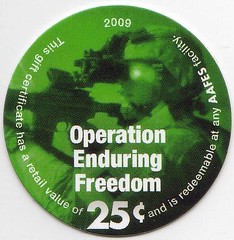
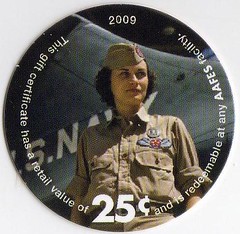
Each series of POGs was only printed once and issued. The last series of POGs is the 16th , dated 2017. The POGs can be obtained only at the facilities where they are issued. POGs that are turned in to AAFES/Exchange in the U.S. are destroyed.
Thanks for the great numismatic cataloging background. Now we're all a little smarter about these. Thanks again, Bill. -Editor
To read the earlier E-Sylum article, see:

Wayne Homren, Editor The Numismatic Bibliomania Society is a non-profit organization promoting numismatic literature. See our web site at coinbooks.org. To submit items for publication in The E-Sylum, write to the Editor at this address: whomren@gmail.com To subscribe go to: https://my.binhost.com/lists/listinfo/esylum All Rights Reserved. NBS Home Page Contact the NBS webmaster 
|